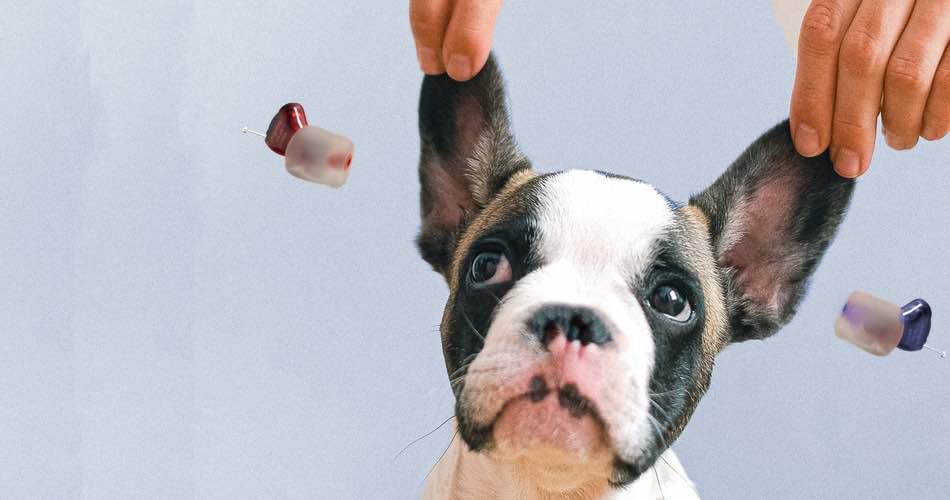Dogs can also be affected by hearing loss due to a wide variety of influences, such as age or incorrect medication. So that the beloved dog can still participate actively in life with joy specialized clinics fit him with hearing aids suitable for dogs.
Before contacting a specialist you should be able to answer the following questions:
- How compliant is your dog?
- Does your dog react better when you stand near to him compared to when it is far away?
- Can your dog be sedated?
When it comes to hearing aids the actual device even though it was individually fitted feels like a foreign body to your dog. Even humans have oftentimes trouble accepting a hearing aid which could itch a little or feel a little awkward when first tried. With a very compliant dog, it is possible for the hearing aids to stay inside the ear. But some dogs will not accept the hearing aids and will try to get rid of them which they oftentimes can with the movement of their ears and with the help of their paws.
Depending on how far away your dog is your voice will be perceived as less loud to the dog and other sounds appear more dominant. So does your dog react better when directly near you compared to far away? Oftentimes it can be difficult for dogs with hearing loss to hear commands from far away and in some cases to locate where your voice came from.
The FETCHLAB is the first and only hearing clinic for animals in the United States capable of running full audiological diagnostic testing and analyses. They see dogs from all over the world. FETCHLAB stands for Facility for Education and Testing of Canine Hearing & Laboratory for Animal Bioacoustics.
Similar clinics can be found here sorted by state in country for testing sites outside the US. If you want to run your own tests to see if your dog hears badly read on. Here the special attention of dog owners is required. If you suspect that your pet no longer hears properly, you can test it yourself at home with a few tricks:
- Clap your hands. Normally, dogs react to such a sound signal with a short twitch.
- Call for your animal with its name. Especially with dogs and cats, you can try out different pitches and strengths and test when your animal perceives your voice.
- Rustle the food bag. Even if your pet doesn’t respond to its name, unless it is hard of hearing, it will most likely respond to the sound of its food.

The problem with this approach is your dog might only have a hearing loss at a certain frequency. A hearing aid could correct this. Those hearing losses makes it harder to har certain voices or in some cases certain signals. If you think a hearing loss might impair your dog call a specialist for an appointment.
How Much Does a Hearing Aid for the Dog Cost?
The cost of such a hearing aid starts at 1000$ and goes up to 5000¢ for both ears. The fitting of hearing aids for dogs can be very complex as the ears of dogs move a lot which usually requires an individual fitting of the hearing aids.
How Does a Hearing Test for Dogs Work?
The hearing test for dogs is called Brainstem Auditory Evoked Response Test (BAER) a specialized version that was developed for animals.
After a thorough general examination, the patient is sedated. Electrodes are then attached to the head and small plugs are inserted into the animal’s ear canal. During the measurement itself, clicking sounds are emitted through the plugs. The electrical activity that occurs in the auditory nerve and brainstem when the animal can hear is registered by the electrodes on the head. The computer transmits the activity as curves to a screen. These curves are then evaluated by a neurologist.
After the interpretation of the specialist, the hearing loss becomes clear. Even deafness can be detected. In the video below you can see how this test works.
Why Is It Important to Know if Your Dog Has Hearing Loss or Not?
Congenital deafness exists in more than 89 breeds of dogs and is usually hereditary. Often, unilateral deafness in an animal goes undetected and hardly limits the animal. With regard to breeding dogs, it is important that deafness is detected and that these dogs are not used as breeding stock. In addition to that is safer for your dog to hear the envirnment well. A car might be driving next to your dog which may or may be not heard with a hearing loss.
All the training for your dog will run easier when your dog is able to hear you well. And if a hearing loss is detected which can not be compensated with hearing aids the training can be adjusted to the needs of your dog. As you can see there are a lot of things why it is important if your dog suffers from hearing loss.
Researches are developing new solutions constanlty to help dogs with hearing loss. Alternatives to conventional hearing aids modified for dogs could middle ear implants like the vibrant sound bridge. But a substantial improvement in dog-owner communication will have to be demonstrated in future studies before the procedure can be recommended in clinical practice.
